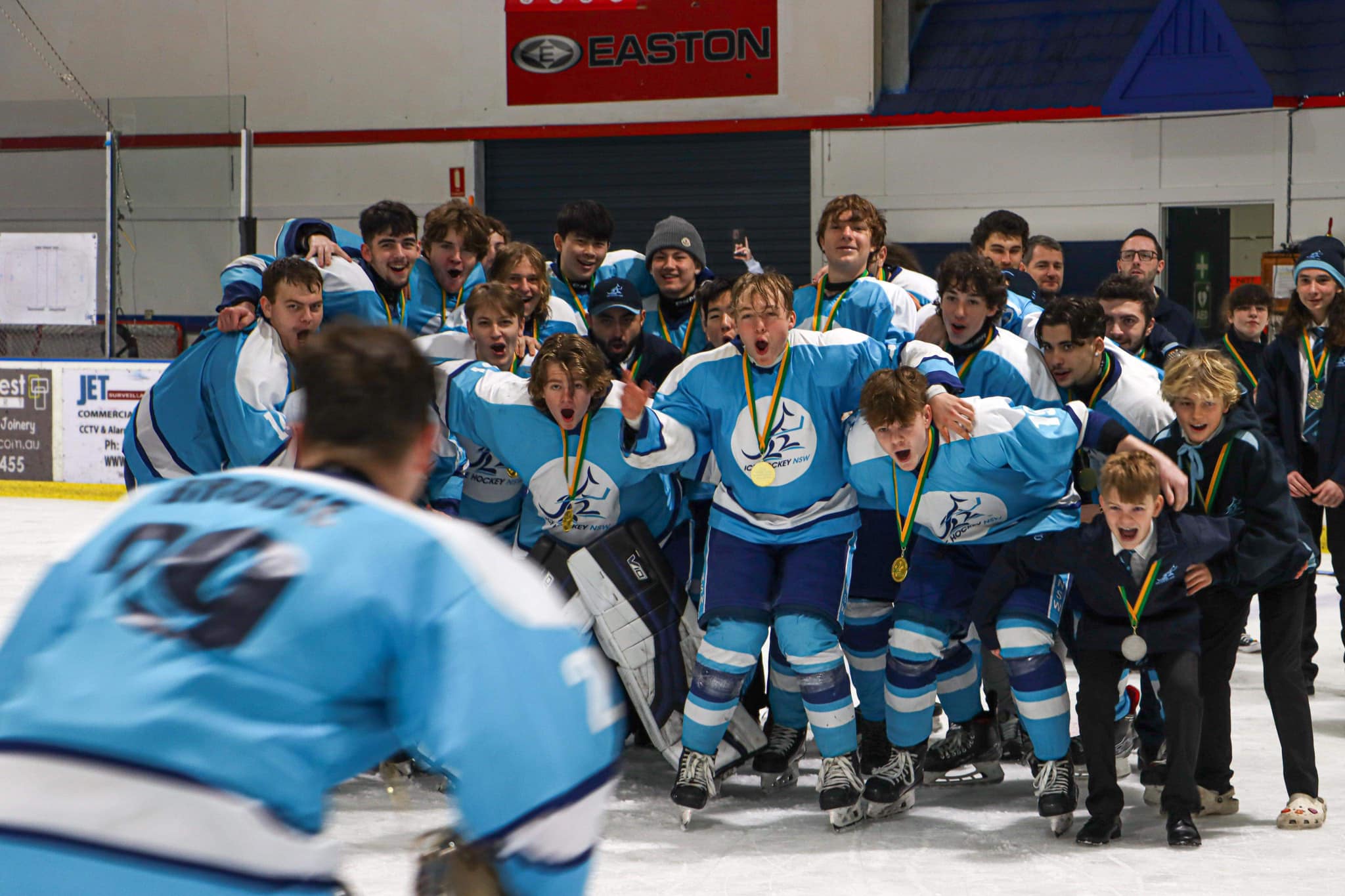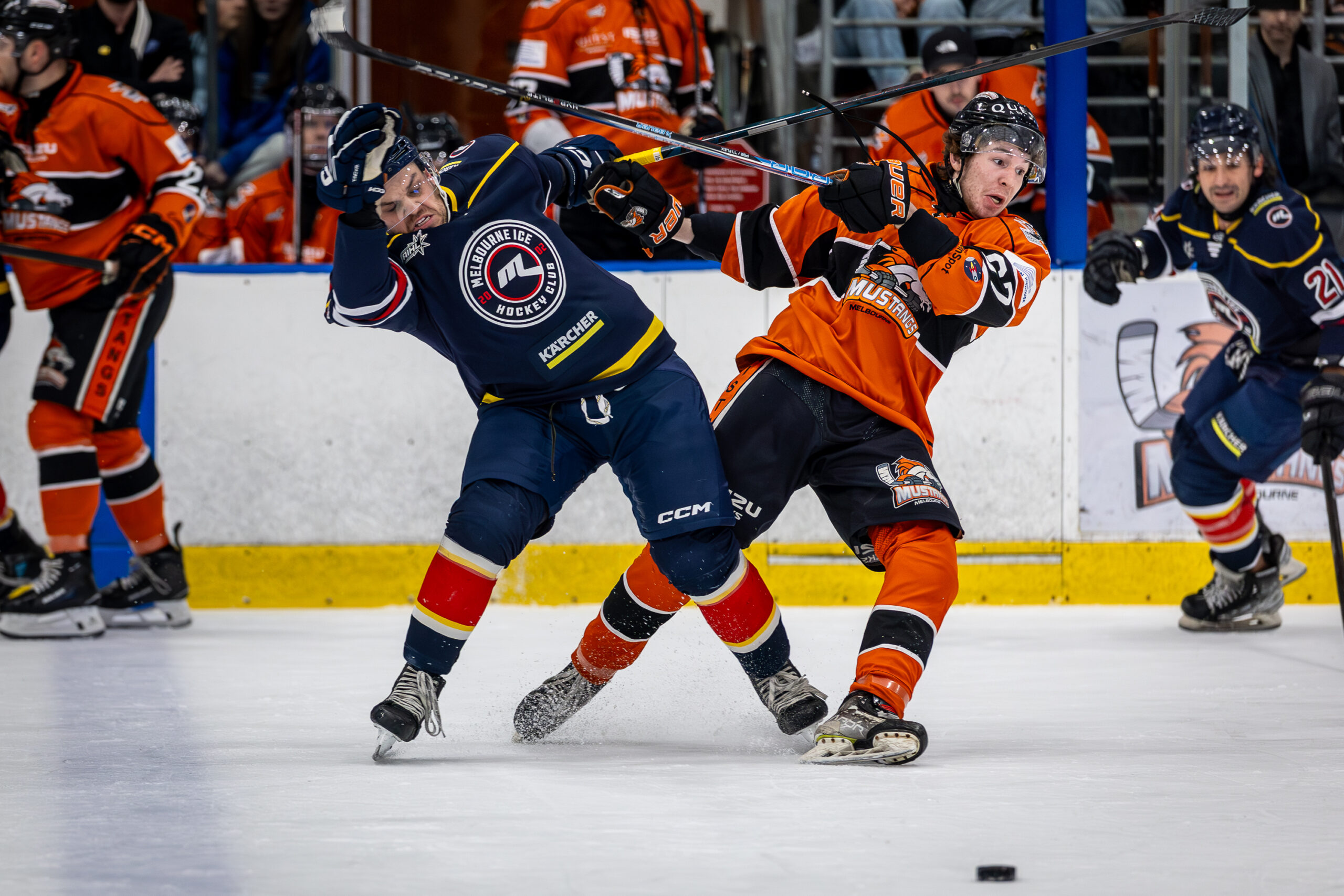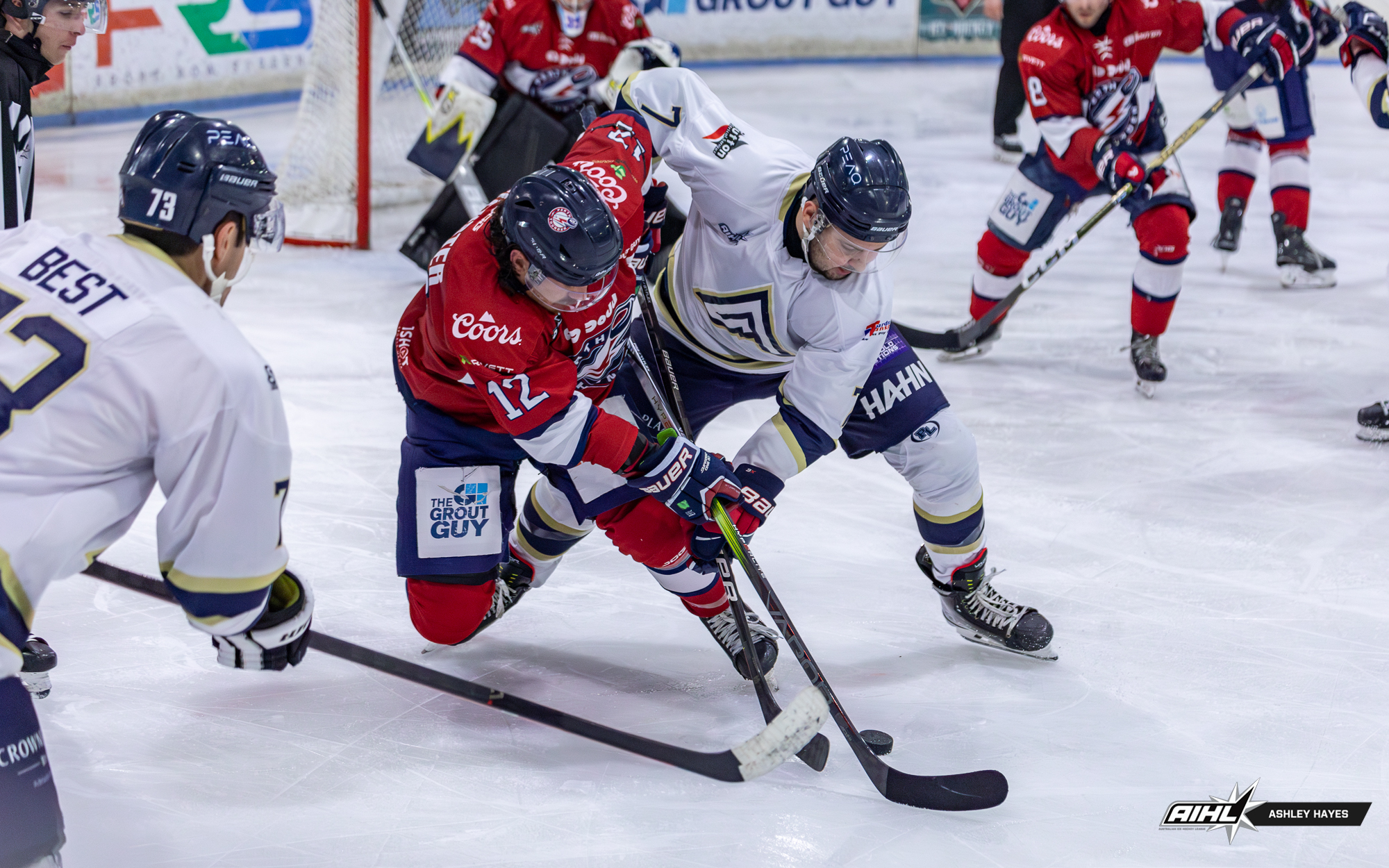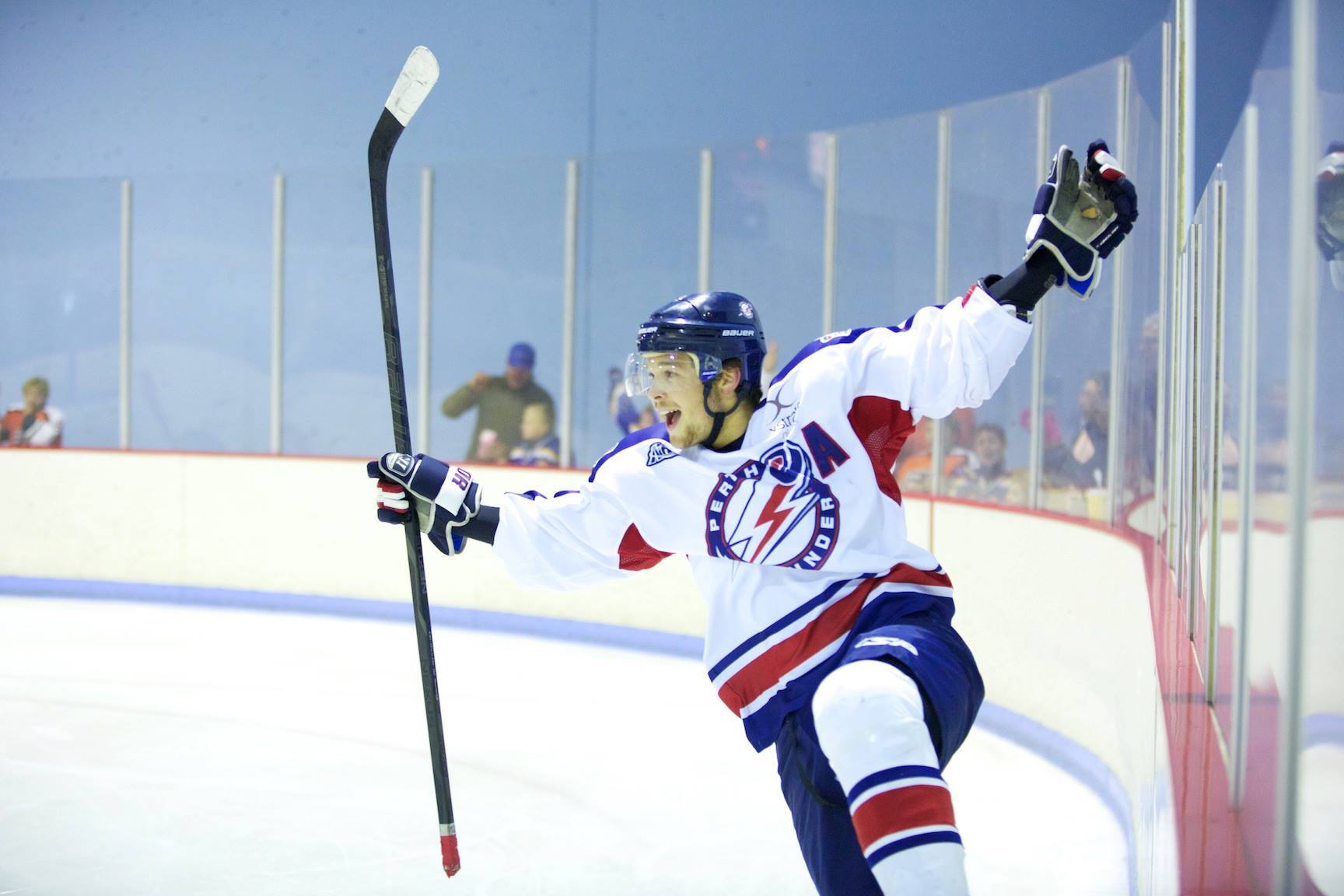Each year, Ice Hockey Australia runs various national tournaments across the age groups. Traditionally, they are staggered throughout the year and around the country.
For 2024, a bold new plan was launched to combine four tournaments into one time slot at Newcastle’s Hunter Ice Skating Stadium during the July school holidays. This required a massive amount of coordination and planning on a scale that has not been seen in Australian hockey before. 24 teams from around Australia would be on site numerous times over a 10-day period.
The tournaments and their traditional time slots were:
- Phil Ginsberg (13U) – August
- Kurt Defris (15U) – end of July, early August
- Syd Tange (18U) – July school holidays
- Stephanie Boxall (Womens) – May or with Jim Brown tournament in October
A major consideration for the Tange tournament is a school holiday tournament but before the Year 12 exams later in the year. This could also apply for younger members of the Boxall tournament.
The tournament was held at Hunter Ice Skating Stadium between Friday, July 12, and Sunday, July 21, 2024, with 76 games played. Friday night’s disco public skating sessions, plus an AIHL game between the Newcastle Northstars and Adelaide Adrenaline on Saturday, July 13, were the only events apart from the tournament held at the rink in the 10 days of hockey action.
The Defris (15U) and Boxall (Women’s) tournaments opened the festival of hockey for the first six and a half. Wednesday, July 17, saw all four tournaments come together for the first and only time with the end of Defris and Boxall, then the start of Ginsberg (13U) and Tange (18U). Ginsberg and Tange then ran together until the end of the tournament on Sunday, July 21.
Each tournament featured six teams who played each other once in a round-robin format. This was followed by two semi-finals and two medal games. It was great to see that the ACT were able to field teams in all four championships despite the smaller player pool compared to the other states and needing assistance from other states to field full teams.
A feature of this tournament structure was the player pool which provided the ACT with additional players. A player needed to try out for their respective state first. If the player was picked as a reserve or not at all for their state, they could elect to go into the player pool.
ACT benefited from this greatly to fill their teams. The people in the player pool also benefited from a chance to play at a national level that they would not have otherwise had. Newcastle-based goaltender Emma Moonen benefited from playing for the ACT in the Boxall tournament. A bronze medal and two shutouts, including the bronze medal game, was a great reward for effort as the ACT’s only goaltender in the tournament.
Another feature of the tournament was the use of Emergency Back Up Goalies (EBUGs). Not all teams brought two goaltenders, so age-appropriate EBUGs were available in case of injury or gear malfunction. The local Newcastle Northstars NSW hockey club supplied the majority of the EBUGs.
The most notable EBUG performance was by Billie Drew in the Defris tournament. Called into action for the ACT due to a helmet issue in the warmup, Billie had a great performance over the 45 minutes of play. The EBUGs made sure that they joined the teams on the ice for warm-up and the handshake line for each game.

Another unusual goalie performance was from SA’s Alston McMillian in the Ginsberg tournament. He played the majority of the tournament between the pipes but did skate for one of the games. He ended up being nominated as the goaltender of the tournament.
One of the benefits of the tournaments being combined was in the event of families having multiple players in different age groups. Compared to having children spread out over the year at various tournaments in locations across Australia, their families were able to travel once to the one mega tournament in Newcastle compared to multiple trips throughout the year. This was greatly appreciated by families in this situation.
Another advantage of the mega tournament was the easy access to players who could play in their age group and then move up to the next age group during the same time frame. There were many examples of play-ups in the various tournaments. Because of how the tournaments were structured, several players played in the Defris (15U) tournament before playing later in their regular age group in the Ginsberg (13U) tournament.

Spectator support was excellent throughout the tournament. Team members were watching and supporting their teams in other tournaments. The spectators did a great job lining themselves up opposite their team’s bench. Some spectators also took the chance to watch the AIHL game on the opening Saturday between Newcastle Northstars and Adelaide Adrenaline. It was clear that there were more spectators compared to individual tournaments due to the format.
Having four tournaments also increased availability for on- and off-ice officials, as well as event volunteers. On-ice officials flew in from all over Australia to Newcastle for the 10-day tournament. It was a great chance for so many on-ice officials to be in the same place at the same time and continue their development on the national stage. The four-official system was used for all Tange games, in addition to medal games in other tournaments.
Many people off the ice were needed to perform various roles for games to run. There were numerous time and score keepers, penalty box attendants, medical staff, ticket checkers, security and merchandise volunteers. Some performed multiple roles.
Thought Fox Media Group live-streamed all four tournaments on YouTube. Vision could also be seen in the arena on the Jumbotron and on monitors in spectator areas. During the tournaments themselves, there were well over 60000 views, with more viewers expected when people at the tournament returned home. The multiple angles provided by the AIHL standard coverage were the same for all four tournaments, including the cameras behind each goal, which can be a useful tool for goalie development.
The successful logistics of accommodating 24 teams and officials was a gold medal performance. A fleet of coaches operated between the rink and the various accommodation in the Lake Macquarie area to make transport easier for the teams. At times, teams had to play twice in one day. Teams were encouraged to spend down time at their accommodation rather than spending all tournament at the rink. Some adjustments needed to be made to the bus timetables however everything worked well.
The four dressing rooms at the rink were well-used. Team managers and coaches did a great job of getting their teams in and out in a timely manner so all teams could use the rooms as required.
Medical staff were on site for the entire tournament. There were some injuries as is normally the case for games of hockey. The medics worked with teams and parents to provide assistance and monitoring of injured players to a high standard.

Tournaments by the numbers supplied by Tournament Director Dawn Watt during the Tange Gold Medal Game:
- Four tournaments involving 24 teams over 10 days. 76 games were played.
- 504 players, coaches & managers – every one was accommodated in the local area;
- Over 200 scheduled bus movements between rink, accommodation and airports;
- 55 volunteers performing 640 shifts in various areas across the tournaments;
- Over 60000 views on the Thought Fox Media Group YouTube channel
Statistics supplied by Thought Fox Media Group after the tournaments:
- Over 68000 views on the Thought Fox Media Group YouTube channel as of 1 August 2024;
- 628 goals and 3629 saves during the 76 games of the tournament;
- Eight shootouts from 76 games;
- Eight Thought Fox Media Group crew members who worked on morning and afternoon shifts
Finally, some commentary statistics of my own:
- I commentated on 49 tournament games in 10 days in addition to three AIHL games. In addition, other games were spent with the Director in the production booth;
- Six commentary partners;
- 24 team sheets and three pages of statistics per tournament that were updated as required;
- Countless visits to eSportsdesk for live scoring information;
- Two deliveries of fish cocktails to the Central Commentary Position;
- Other favourite items from the cafe of my commentary partners included toasties, chips (with & without gravy), coffee and jellybeans;
- One on-air shout-out was requested by an ACT player to his mum after a game. He used the blade of his stick to tap me on the shoulder to attract my attention before asking for the shoutout;
- During the tournament, I spoke with so many team officials, players, parents and other spectators. Their feedback and kind words were certainly appreciated in between commentary stints;
The overall vibe from the mega tournament was that everything went very smoothly especially considering four tournaments were running at once. While it is too early for an official announcement for a report of the mega tournament in 2025, it is certainly worth further discussion at high levels within Ice Hockey Australia.




One response to “It Takes A Community To Run A Mega National Tournament”
[…] It Takes A Community To Run A Mega National Tournament by Eric Brook (Hockey Hype Australia, 25 October 2024) […]